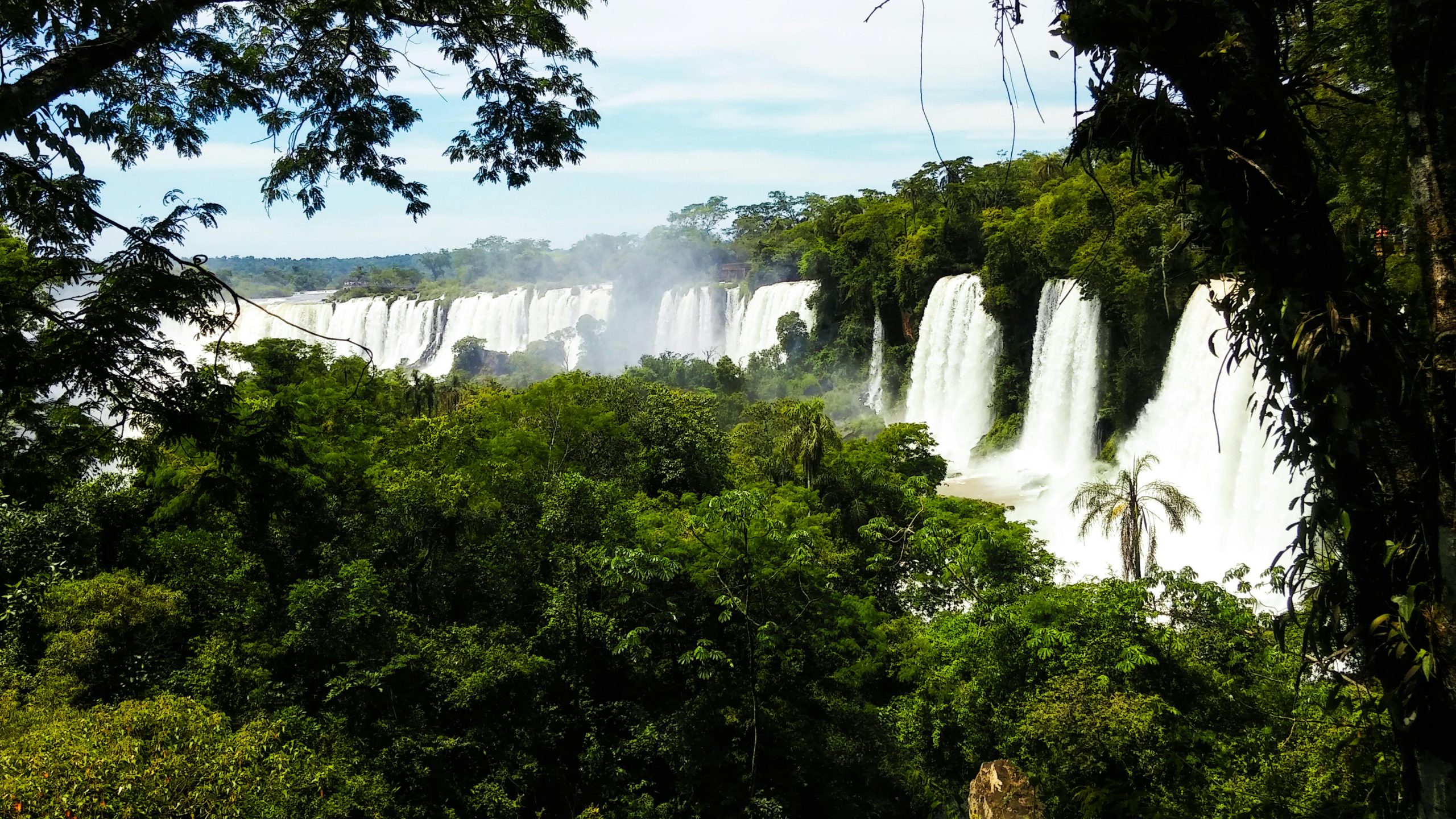Iguazu Falls, one of the largest and most impressive waterfall systems in the world, spans the border between Argentina and Brazil. Located in the subtropical rainforest of the Iguazu National Park, the falls are a breathtaking display of nature’s power and beauty, offering a striking mix of panoramic views, lush greenery, and the thunderous roar of cascading water. Recognized as a UNESCO World Heritage site, Iguazu Falls is a must-see destination for nature enthusiasts, photographers, and adventure seekers alike.
The Magnificent Falls
The Iguazu Falls system consists of 275 individual waterfalls spread across a 2.7-kilometer stretch of the Iguazu River, creating a stunning natural spectacle. The falls are arranged in a horseshoe shape, with the Devil’s Throat (Garganta del Diablo) being the largest and most dramatic of all the waterfalls. The sheer volume of water plunging down into the mist-filled gorge below creates a powerful, awe-inspiring sight.
The falls are surrounded by dense tropical rainforest, home to a diverse range of flora and fauna, making the area a haven for wildlife. The constant mist and spray from the waterfalls nourish the surrounding vegetation, creating a vibrant green backdrop against the stark white of the water plunging into the river below.
What to Do at Iguazu Falls
There are several ways to explore and experience the awe-inspiring beauty of Iguazu Falls, whether you want to take in the views from various vantage points, embark on hiking trails, or even get up close to the falls via boat.
- Explore the Viewing Platforms: On both the Brazilian and Argentine sides of the falls, there are well-maintained viewing platforms that offer spectacular vistas of the waterfalls from different angles. The Argentine side has extensive walkways and trails that allow visitors to get closer to the falls and see the falls from several levels, while the Brazilian side provides sweeping panoramic views of the entire falls system.
- The Devil’s Throat: A must-see for any visitor, the Devil’s Throat is the most powerful and dramatic part of the falls. Located on the Argentine side, a series of walkways take you close to the edge, where you can feel the thunderous roar of the water and witness the sheer volume of water plummeting into the gorge below.
- Boat Tours: For an adrenaline-pumping experience, consider taking a boat ride that brings you right up to the base of the falls. The boat trips, available on both the Argentine and Brazilian sides, offer a unique, up-close view of the waterfalls and may even take you into the spray of the falls for a refreshing soak.
- Hiking Trails: The surrounding rainforest of Iguazu Falls is filled with numerous hiking trails that allow visitors to explore the biodiversity of the area. In Argentina, the Lower Circuit and Upper Circuit trails offer stunning views of the falls from different perspectives. On the Brazilian side, the Cataratas Trail provides an easy walk with fantastic views of the falls and the surrounding jungle.
- Wildlife Watching: The rainforest around Iguazu Falls is home to a variety of animals, including toucans, capuchin monkeys, butterflies, and a variety of other bird species. Be on the lookout for wildlife as you explore the area, as the lush surroundings provide plenty of opportunities for animal sightings.
- Helicopter Ride: For a truly unique perspective of the falls, take a helicopter ride over Iguazu. From above, you can appreciate the sheer scale and beauty of the waterfall system as it plunges into the river below, surrounded by dense green jungle.
When to Visit
The best time to visit Iguazu Falls is during the shoulder months of March to May or September to November, when the weather is pleasant, and the falls are at their fullest. During the summer (December to February), the region can be quite hot and humid, though it’s also the time when the falls are most powerful due to the rainy season. However, the crowds can be larger during peak seasons, so visiting during the shoulder months allows you to avoid some of the busiest times.
Travel Tips
- Wear Comfortable Footwear: The trails and platforms around Iguazu Falls involve a fair amount of walking, so it’s important to wear sturdy, comfortable shoes, especially if you plan on hiking.
- Bring Waterproof Gear: The mist from the falls can get you wet, especially near the base of the falls. A waterproof jacket or poncho, along with waterproof footwear, is recommended.
- Stay Hydrated: The weather can get quite warm and humid, so make sure to bring water to stay hydrated as you explore.
- Plan for Both Sides: While both the Argentine and Brazilian sides of the falls offer unique perspectives, visiting both sides is highly recommended to experience the full grandeur of Iguazu Falls. The Brazilian side offers a panoramic view of the falls, while the Argentine side allows for a more up-close and personal encounter.
How to Get There
The nearest major city to Iguazu Falls is Puerto Iguazu, Argentina, which is located about 15 kilometers from the falls. The Argentine side of the falls can be easily reached from Puerto Iguazu, and there are direct flights to Cataratas del Iguazu International Airport from Buenos Aires and other major cities. On the Brazilian side, the city of Foz do Iguaçu offers easy access to the falls, with flights available from São Paulo and other Brazilian cities.
A Natural Wonder Like No Other
Iguazu Falls is a true testament to the raw power and beauty of nature. Whether you’re standing on the viewing platforms gazing at the falls, taking a boat tour beneath the cascading water, or exploring the surrounding rainforest, the falls offer an experience that will leave you in awe. This extraordinary natural wonder is not only one of the most impressive waterfalls in the world but also a place where visitors can connect with the natural world in all its splendor.

